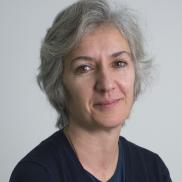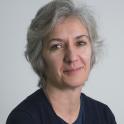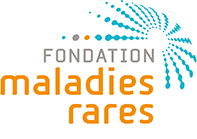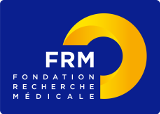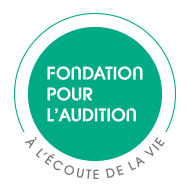Published on 22.10.2025
Presentation
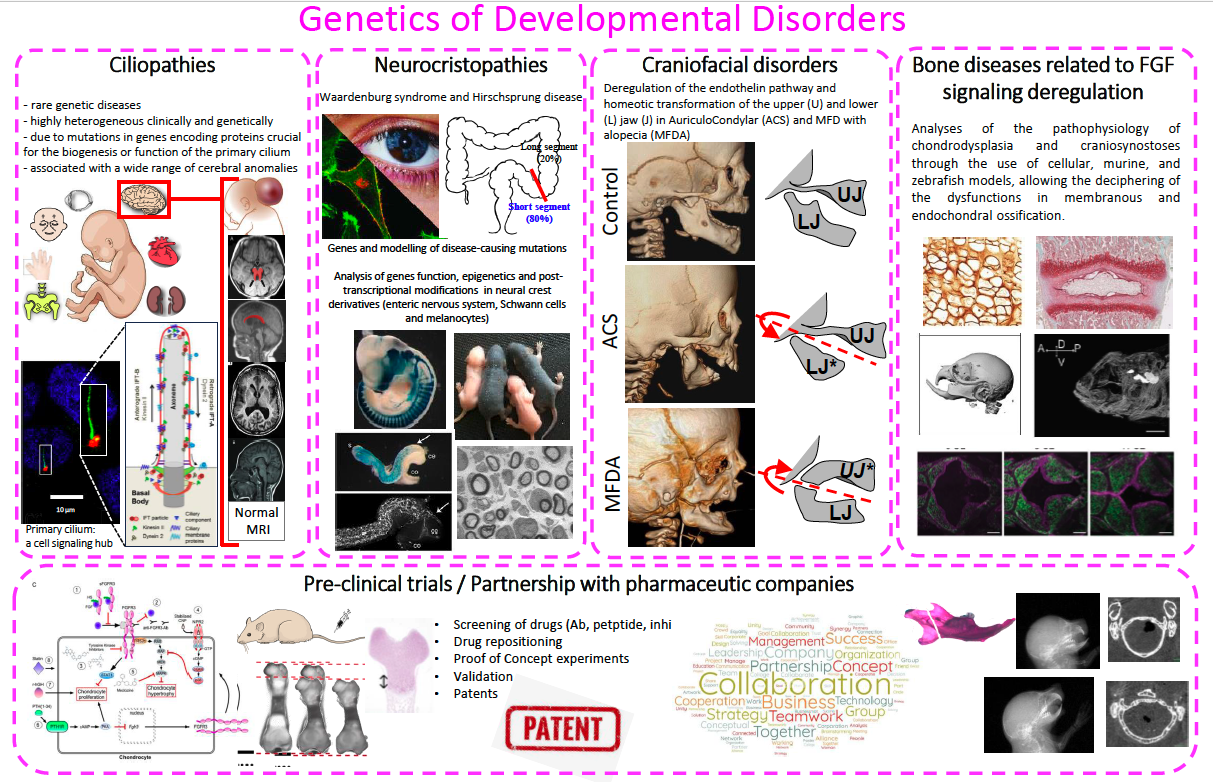
The lab merges the previous “Embryology and genetics of malformations” lab and the group of Laurence Legeai-Mallet from the “Molecular and physiopathological bases of osteochondrodysplasia” lab. We combine complementary expertise related to developmental mechanisms, rare diseases and translational studies. Notably, we bring together expertise in gene regulation, rare Mendelian diseases, signaling pathways, cell and developmental biology and therapeutic approaches. Our research is based on animal models and primary cells or iPSCs from patients, and benefits from partnerships with pharmaceutical companies.
Via the Reference Center for Rare Diseases “Anomalies du Développement”, we recruit patients with undiagnosed conditions for research with a special interest in limb and craniofacial anomalies, neurocristopathies and ciliopathies. We develop cellular and animal models to understand the pathophysiology of the disorders, and we have expertise in leveraging such information for the development of pharmaceuticals.
Our goals are :
- to develop technologies for generation of zebrafish models of human disease-causing mutations by precise genome editing,
- to generate animal and cellular models for human skeletal diseases caused by FGF signaling deregulation, for the development of novel therapeutic approaches (several preclinical trials are ongoing),
- to develop 2D and 3D IPS cell-based models to explore the role of primary cilia in the development of the human brain,
- to dissect the molecular network, including transcriptional and post-transcriptional regulation, governing enteric and peripheral nervous system differentiation and maintenance.
Members
GORDON Chris, CRCN - Craniofacial disorders
Charlotte Guillouet, PhD student
DJAZIRI Nabila, IE
PELET Anna, IR
GUIMIER Anne, PH
LYONNET Stanislas, PU-PH
AMIEL Jeanne, PU-PH
THOMAS Sophie, CRCN - Ciliopathies
BOUTAUD Lucile, PH
MONCLER Candice, PhD student POREE Jeanne, M2 student
BONDURAND Nadege, DR2 - Neurocristopathies
PINGAULT Veronique, MCU-PH
CIRILLO Carla, CRCN
GAYDA Fanny, IE
HENRY Mathilde, M2 student
DAY lucie, PhD student
DAMBROISE Emilie, CRCN - Bone diseases related to FGF signaling deregulation
LEGEAI-MALLET Laurence, DRCE
MORICE Anne MCU-PH
VILPREUX Charline, IR
LEMOINE Clara, IE
MAYEUX Franck, IE
de la SEIGLIERE Amélie, IE
KACI Nabil, IE
FAYAD Chantal, PhD student
PEREUR Pachel, PhD Student
LANDARD Matthieu, Master 2
Best publications
- Boutaud L, Michael M, Banal C, Calderon D, Farcy S, Pernelle J, Goudin N, Maillard C, Dimartino C, Deleschaux C, Dupichaud S, Lebreton C, Saunier S, Attié-Bitach T, Bahi-Buisson N, Lefort N, Thomas S. 2D and 3D Human Induced Pluripotent Stem Cell-Based Models to Dissect Primary Cilium Involvement during Neocortical Development. J Vis Exp. 2022 Mar 25;(181). doi: 10.3791/62667. PMID: 35389978.
- Dambroise E, Ktorza I, Brombin A, Abdessalem G, Edouard J, Luka M, Fiedler I, Binder O, Pelle O, Patton EE, Busse B, Menager M, Sohm F, Legeai-Mallet L. Fgfr3 Is a Positive Regulator of Osteoblast Expansion and Differentiation During Zebrafish Skull Vault Development. J Bone Miner Res. 2020 Sep;35(9):1782-1797. doi: 10.1002/jbmr.4042. Epub 2020 May 26. PMID: 32379366.
- Gacem N, Kavo A, Zerad L, Richard L, Mathis S, Kapur K, Parisot M, Amiel J, Dufour S, de la Grange P, Pingault V, Vallat JM and Bondurand N. ADAR1 mediated regulation of neural crest derived melanocytes and Schwann cell development. Nature Communications, 2020; 10;11(1):198. doi: 10.1038/s41467-019-14090-5
- Guillouet C, Agostini V, Baujat G, Cocciadiferro D, Pippucci T, Lesieur M, Georget M, Schatz U, Fauth C, Louie R, Rogers C, Davis JM, Konstantopoulou V, Mayr JA, Bouman A, Wilke M, VanNoy GE, England EM, Park KL, Brown K, Saenz M, Novelli A, Digilio MC, Mastromoro G, Rongioletti, Gerardo Piacentini MCA, Kaiyrzhanov R, Guliyeva S, Hasanova L, Shears D, Bhatnagar I, Stals K, Klaas O, Horvath J, Witmer D, MacCarrick G, Vizar Cisarova K, Good JM, Gorokhova S, Boute O, Smol T, Bruel AL, Patat O, Broadbent JR, Tan TY, Tan NB, Busa T, Graziano C, Amiel J, Gordon CT, Biallelic MED6 variants cause a novel MEDopathy with intellectual disability, motor delay and craniofacial, cardiac and limb malformations. AJHG 2025;112:829-845
- Morice A, de La Seiglière A, Kany A, Khonsari RH, Bensidhoum M, Puig-Lombardi ME, Legeai Mallet L. FGFR antagonists restore defective mandibular bone repair in a mouse model of osteochondrodysplasia. Bone Res. 2025 Jan 21;13(1):12. doi: 10.1038/s41413-024-00385-x. PMID: 39837840; PMCID: PMC11751307.
Team
Resources & publications
-
 2020Journal (source)Am. J. Hum. Genet.
2020Journal (source)Am. J. Hum. Genet.Bi-allelic Variations of SMO in Humans Cause a Broad Spectrum of Developmenta...
-
 2019Journal (source)Hum. Mol. Genet.
2019Journal (source)Hum. Mol. Genet.PAICS deficiency, a new defect of de novo purine synthesis resulting in multi...
-
 2019Journal (source)Brain
2019Journal (source)BrainMN1 C-terminal truncation syndrome is a novel neurodevelopmental and craniofa...
-
 2019Journal (source)Biol. Cell
2019Journal (source)Biol. CellCilia in hereditary cerebral anomalies.
-
 2018Journal (source)Am. J. Hum. Genet.
2018Journal (source)Am. J. Hum. Genet.Mutations in TUBB4B Cause a Distinctive Sensorineural Disease.
-
 2017Journal (source)Am. J. Hum. Genet.
2017Journal (source)Am. J. Hum. Genet.FDXR Mutations Cause Sensorial Neuropathies and Expand the Spectrum of Mitoch...
-
 2017Journal (source)Nat. Genet.
2017Journal (source)Nat. Genet.De novo mutations in SMCHD1 cause Bosma arhinia microphthalmia syndrome and a...
-
 2017Journal (source)Gastroenterology
2017Journal (source)GastroenterologyDifferentiation of Mouse Enteric Nervous System Progenitor Cells Is Controlle...
-
 2017Journal (source)Dev. Biol.
2017Journal (source)Dev. Biol.Mouse models of Hirschsprung disease and other developmental disorders of the...
-
 2017Journal (source)Am. J. Hum. Genet.
2017Journal (source)Am. J. Hum. Genet.Biallelic PPA2 Mutations Cause Sudden Unexpected Cardiac Arrest in Infancy.
-
 2016Journal (source)Hum. Mol. Genet.
2016Journal (source)Hum. Mol. Genet.Subnuclear re-localization of SOX10 and p54NRB correlates with a unique neuro...
-
 2016Journal (source)Nat. Genet.
2016Journal (source)Nat. Genet.MMP21 is mutated in human heterotaxy and is required for normal left-right as...
-
 2015Journal (source)Am. J. Hum. Genet.
2015Journal (source)Am. J. Hum. Genet.Mutations in the endothelin receptor type A cause mandibulofacial dysostosis ...
-
 2014Journal (source)Am. J. Hum. Genet.
2014Journal (source)Am. J. Hum. Genet.Mutations in endothelin 1 cause recessive auriculocondylar syndrome and domin...
-
 2013Journal (source)J. Med. Genet.
2013Journal (source)J. Med. Genet.EFTUD2 haploinsufficiency leads to syndromic oesophageal atresia.
-
 2011Journal (source)Nat. Genet.
2011Journal (source)Nat. Genet.Germline deletion of the miR-17∼92 cluster causes skeletal and growth defects...
-
 2009Journal (source)Nat. Genet.
2009Journal (source)Nat. Genet.Highly conserved non-coding elements on either side of SOX9 associated with P...
-
 2008Journal (source)Nature
2008Journal (source)NatureSomatic and germline activating mutations of the ALK kinase receptor in neuro...

